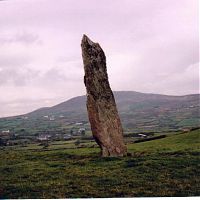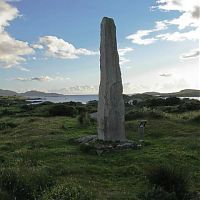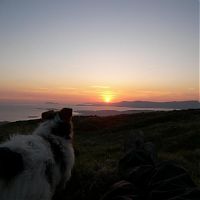Web Design by Proximo Web Design | Copyright © All rights reserved
Articles

- Home
- Twilight Time
- Thief of Tales: A Celtic Fable
- Don't Squeeze the Shaman
- Scribes wordsmithing services
- Links and Acknowledgements
- The Beara Peninsula
- Photo Gallery
- Contact me



Mythical Beara
Along the luxurious lengths of Beara’s headlands and up into its hidden vales, the visitor will discover a rich trove of myth. Down the centuries, legend carries tales of new beginnings, of restoration, of renewals, and also of persistence. Passing into and emerging from the mists that frequently and fleetingly cloak parts of the peninsula, one’s imagination stirs and swirls into the past. (Don’t let it swirl so much that you miss actual folk living and breathing and working and playing all about you – you won’t regret meeting them!)
The Children of Lir, restored from the shape of swans to human form after a 900-year enchantment, swim to shore on some rocky strand near Allihies, to tell the tale of their life. The Milesian Celts, journeying into the mists of the unknown, slice through the surf in long-prowed craft to challenge the mystical Tuatha de Danaan for the sovereignty of Erin. Standing on any headland or strand along the coast of Beara, one can conjure the image of the Milesian’s chief bard Amergin, as he invokes the judgement of the land of Ireland, recorded for us in the famous poem The Song of Amergin, with the Milesian fleet waiting with him beyond the ninth wave.

Stone Circle, Ardgroom, Beara
Photo by SA Harrington
Some scholars comment on Beara as a possible refuge of ancient culture on the margin of a glaciated Hibernia. In this sense, the stone circles and gallauns of the peninsula reflect the flame of a cultural spirit kept alit, to spread again as the ice melted away.

Standing Stone
Photo by Seamus Harrington
The well-preserved stone circles of Dereenataggart, Ardgroom and Gleninchiquin, the Ballycrovane Oghman Stone, the Terrynihillane lios (fairy fort), and the numerous other ancient sites and markers – all human culture inscribed on the landscape and become myth. Set against the breath-taking, panoramic Beara landscape, they inspire a mysterious blend of exaltation and humility. These symbols, artefacts, and relics are a focal point for attention. Yet, they are unassuming markers, entirely without grandiosity. Rather, they stir echoes of antiquity while letting the landscape speak for itself.

Ballycrovane Ogham Stone, Beara
Photo by Seamus Harrington
Past the village of Eyeries in Cill Caithirn, the Cailleach Bhearra sits in stony silence, gazing out over Coulagh Bay to the distant Atlantic beyond. A personification of Bui – a Celtic Mother Goddess – the Cailleach appears throughout Irish and Scottish folklore, figuring in the famous 9th Century poem The Hag of Beara, among other tales. Buí is also associated with Dursey Island, the name of which in Gaelic is Oileann Baoi – the Isle of Buí. Whether or not a figure left pining for a lover gone away over the waves, the Cailleach evokes both longing and hope bound to the sea.

An Cailleach Bhearra, Kilcatherine, Beara
Photo by SA Harrington
Beyond Oileann Baoi the Bull Rock rises out of the Atlantic. Now the site of a lighthouse, the rock is mythically associated with Donn, the Irish Lord of the Underworld, and the mighty cavern within the rock was believed to be a passageway into his realm.

Dolmen, Killough West, Beara
Photo by Seamus Harrington
The visitor to Beara may find that the peninsula itself assumes a passageway dimension. For some it is inward, opening onto aspects of their Self that have remained in shadow. For others it is outward, toward a breath of rich oxygenated Atlantic air, crystal clear seawater, a dream-like quiet, of sunbeam, mist and rainbow. As many have found it down the centuries, Beara remains a place of transformation.
To experience the Beara landscape and seascape with an understanding of the mythic past is like looking into the eyes of a newborn baby and instantly recognizing an old, old soul.
